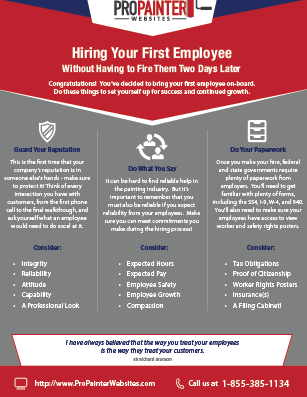Seasonal Factors To Consider For Business Exterior Painting: What You Need To Know
Seasonal Factors To Consider For Business Exterior Painting: What You Need To Know
Blog Article
Material Written By-Regan Rodriquez
When you're preparing a business outside paint job, seasonal elements can make or break your outcomes. You'll wish to take into consideration exactly how temperature and humidity effect paint application and drying out times. Choosing the right season can guarantee your paint sticks effectively and lasts much longer. Yet which seasons are genuinely the most effective for this kind of job? Allow's discover the key elements that can impact your job's success.
The Effect of Temperature on Paint Application
When you're planning a commercial outside paint job, the temperature level can considerably impact how well the paint sticks and dries out.
Ideally, you wish to paint when temperature levels range between 50 ° F and 85 ° F. If it's as well cool, the paint may not cure appropriately, resulting in issues like peeling off or fracturing.
On the other side, if it's as well warm, the paint can dry out also swiftly, protecting against appropriate adhesion and causing an unequal finish.
You should additionally consider the time of day; early morning or late afternoon uses cooler temperatures, which can be much more desirable.
Constantly inspect the maker's referrals for the specific paint you're using, as they usually offer support on the optimal temperature array for optimum results.
Humidity and Its Effect on Drying Times
Temperature level isn't the only ecological element that influences your commercial outside painting job; moisture plays a considerable role too. High humidity levels can decrease drying out times drastically, affecting the total quality of your paint task.
When the air is saturated with wetness, the paint takes longer to cure, which can cause concerns like bad attachment and a greater danger of mold growth. If you're repainting on an especially humid day, be gotten ready for extensive delay times between coats.
It's crucial to check local weather and plan accordingly. Preferably, aim for humidity degrees in between 40% and 70% for optimum drying out.
Maintaining https://painter-near-me31087.blog4youth.com/34993714/uncover-one-of-the-most-current-methods-and-trends-in-home-paint-and-be-surprised-by-the-innovative-strategies-to-renew-your-home consider mind ensures your job stays on track and delivers a long-term finish.
Best Seasons for Commercial Exterior Paint Projects
What's the very best season for your industrial external painting tasks?
Spring and very early autumn are usually your best choices. During these periods, temperature levels are mild, and humidity degrees are typically reduced, producing ideal problems for paint application and drying.
Stay clear of summertime's intense heat, which can create paint to dry also promptly, causing poor bond and surface. In a similar way, wintertime's cool temperature levels can prevent correct drying and healing, risking the durability of your paint work.
Go for days with temperatures between 50 ° F and 85 ° F for ideal results. Keep in mind to inspect the regional weather report for rainfall, as damp conditions can spoil your project.
https://www.womanandhome.com/homes/best-color-for-ceilings/ around these aspects ensures your painting job runs efficiently and lasts much longer.
Final thought
To conclude, preparing your industrial outside painting jobs around seasonal considerations can make a significant distinction in the outcome. By organizing work during the optimal temperatures and humidity degrees, you'll make sure far better bond and drying times. Remember to keep an eye on regional weather forecasts and pick the right time of year-- spring and early autumn are your best options. Taking these actions will certainly assist you achieve a resilient and professional finish that lasts.
